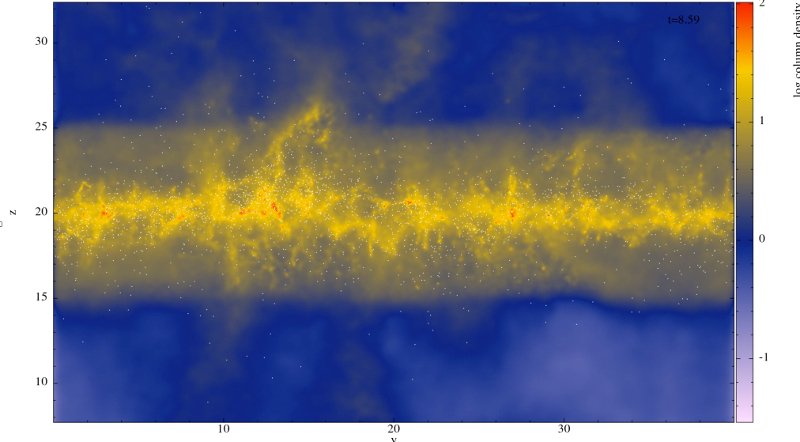| EPoS Contribution |
|
Dynamics of the gaseous backbones of galaxies
Andreas Burkert UMS+MPE, Munich, DE | |
| Large filaments, like Nessie, have been suggested to represent the backbones of star-forming galaxies, dominating the large-scale structure and regulating star formation. Their global coherence presents a theoretical challenge as the information crossing timescales are much longer than the timescale on which stars form and stellar feedback disrupts their structure. I present a detailed analyses of the origin and evolution of Nessie-like filaments. Despite being transient, with gas continuously streaming through the system, its overall structure is stable over a long timescale. It is shown that these structures represent ideal places for massive cluster formation. They might also play in important role in driving large-scale turbulence in the interstellar medium. | |
 | |
| Caption: Surface density distribution of a simulation of a Nessie-like filament. Points represent newly formed stars. | |
| Collaborators: C. Alig, USM, DE |
Suggested Session:
Molecular Clouds |

